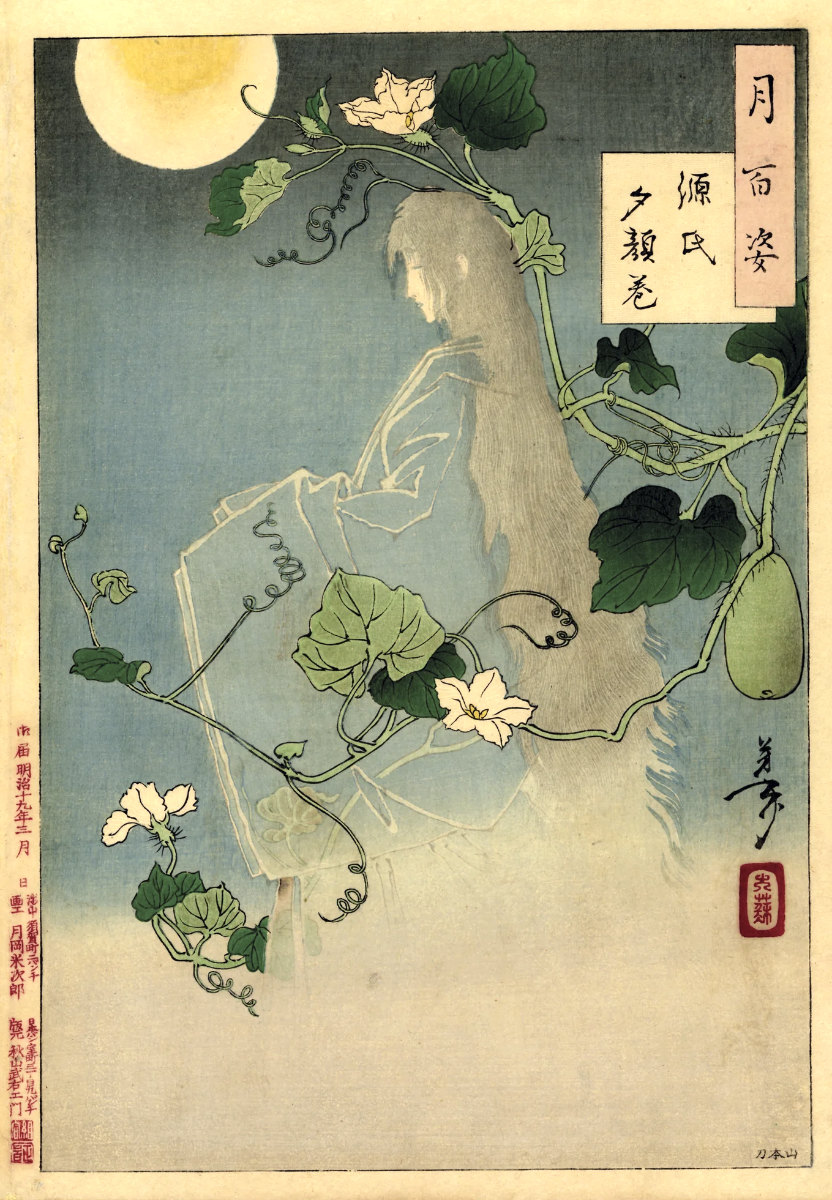Yugao is a Noh play, sometimes attributed to Zeami, based on the story of Yūgao (Lady Moonflower) from the Tale of Genji. A travelling priest is drawn to the decayed villa where Yūgao had died. There he is told by a transient figure of the tragic love of Yūgao and Prince Genji, the poetic imagery stressing both the ephemerality of love, and her humble status compared to the Shining Prince. In the second part of the play, the figure reappears, identified as the ghost of Yūgao, asking for sympathy, and for prayers of release from her persisting attachment to the love-affair.
| Alias The Yūgao |
| Real Names/Alt Names Lady Moonflower |
| Characteristics Myths & Legends, Ghost, Medieval Age, Japanese |
| Creators/Key Contributors Tsukioka Yoshitoshi, Zeami |
| First Appearance The Tale of Genji (ca. 1000) by Murasaki Shikibu |
| First Publisher ○ |
| Appearance List The Tale of Genji (ca. 1000) by Murasaki Shikibu — earliest source of the Yūgao episode; Genji monogatari tama no ogushi (1799; modern ed. 1974) by Motoori Norinaga — classical commentary including the Yūgao chapter; The Tale of Genji: Part One (1925; Anchor reprint 1955) by Murasaki Shikibu — trans. Arthur Waley; includes ch. 4 “Evening Faces”; The World of the Shining Prince: Court Life in Ancient Japan (1964; 1969 ed.) by Ivan Morris — cultural history using Genji (discusses the early love episodes, incl. Yūgao); The Tale of Genji (1976) by Murasaki Shikibu — trans. Edward G. Seidensticker. Film: The Tale of Genji (1951) by Kōzaburō Yoshimura; Genji monogatari (1966 film) by Kon Ichikawa. |
| Sample Read The Tale of Genji (Translated 1970) [Internet Archive] |
| Description Yugao is a Noh play, sometimes attributed to Zeami, based on the story of Yūgao (Lady Moonflower) from the Tale of Genji. A travelling priest is drawn to the decayed villa where Yūgao had died. There he is told by a transient figure of the tragic love of Yūgao and Prince Genji, the poetic imagery stressing both the ephemerality of love, and her humble status compared to the Shining Prince. In the second part of the play, the figure reappears, identified as the ghost of Yūgao, asking for sympathy, and for prayers of release from her persisting attachment to the love-affair. |
| Source Yugao – Wikipedia |

